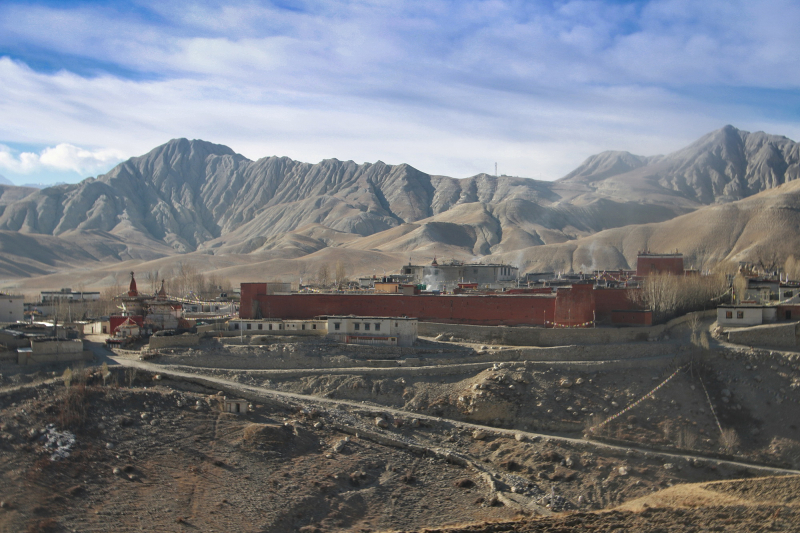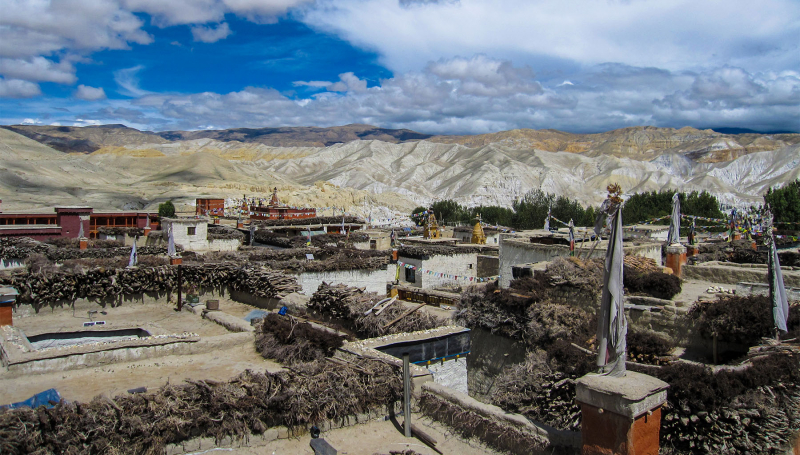Lomanthang
Lo Manthang, the historic capital of the Kingdom of Lo, was built in the 15th century on a plateau 3800 meters above sea level. The hamlet is situated on an old trade route that follows the Kali Gandaki River across the Himalayas. The village is encircled by a 6-meter-high earthen wall with square towers, or dzong, at each corner. A dense settlement of earthen structures exists within the walls.
Lo is the northern two-thirds of Mustang district, which is culturally and linguistically influenced by Tibet, whereas Thak is the southern third, which is home to the Thakali people, who speak a distinct language and have a synthesis of Tibetan and Nepalese culture. At least twelve caverns, ornamented with old Buddhist artwork and placed in sheer cliffs at an elevation of 14,000 feet, were recently discovered north of Annapurna and near the hamlet (4,300 m). The paintings, which date from around the 13th century, have Newari influences and include Tibetan letters in ink, silver, and gold, as well as pre-Christian era pottery fragments.
The Lobas, who live in Lo Manthang, are culturally and ethnically related to the people of Western and Central Tibet. Stupas, decorative art, and paintings representing various forms of the Buddha were discovered by explorers. The Sakyapa traditions of Tibetan Buddhism define the culture to a considerable extent, and many of the ancient festivals, rituals, and ceremonies are still conducted today.
Location: Mustang district in Gandaki Province of western Nepal











